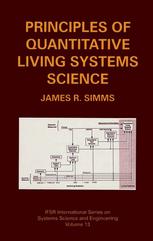

Most ebook files are in PDF format, so you can easily read them using various software such as Foxit Reader or directly on the Google Chrome browser.
Some ebook files are released by publishers in other formats such as .awz, .mobi, .epub, .fb2, etc. You may need to install specific software to read these formats on mobile/PC, such as Calibre.
Please read the tutorial at this link: https://ebookbell.com/faq
We offer FREE conversion to the popular formats you request; however, this may take some time. Therefore, right after payment, please email us, and we will try to provide the service as quickly as possible.
For some exceptional file formats or broken links (if any), please refrain from opening any disputes. Instead, email us first, and we will try to assist within a maximum of 6 hours.
EbookBell Team

4.0
6 reviewsIn 1978, when the book Living Systems was published, it contained the prediction that the sciences that were concerned with the biological and social sciences would, in the future, be stated as rigorously as the “hard sciences” that study such nonliving phenomena as temperature, distance, and the interaction of chemical elements. Principles of Quantitative Living Systems Science, the first of a planned series of three books, begins an attempt to fulfill that prediction. The view that living things are similar to other parts of the physical world, differing only in their complexity, was explicitly stated in the early years of the twentieth century by the biologist Ludwig von Bertalanffy. His ideas could not be published until the end of the war in Europe in the 1940s. Von Bertalanffy was strongly opposed to vitalism, the theory current among biologists at the time that life could only be explained by recourse to a “vital principle” or God. He c- sidered living things to be a part of the natural order, “systems” like atoms and molecules and planetary systems. Systems were described as being made up of a number of interrelated and interdependent parts, but because of the interrelations, the total system became more than the sum of those parts. These ideas led to the development of systems movements, in both Europe and the United States, that included not only biologists but scientists in other fields as well. Systems societies were formed on both continents.